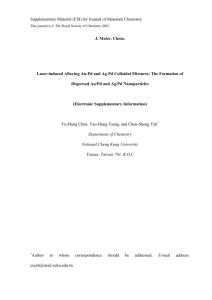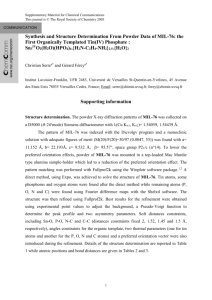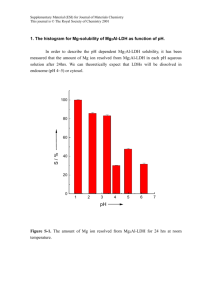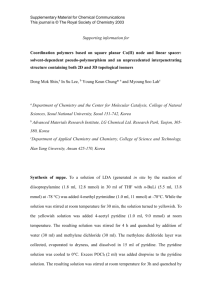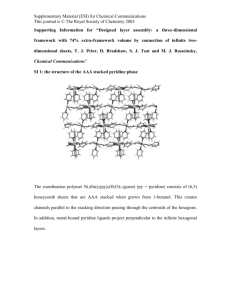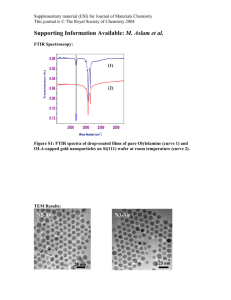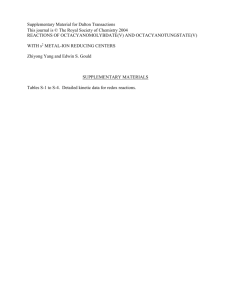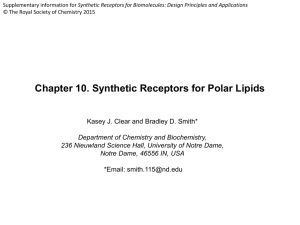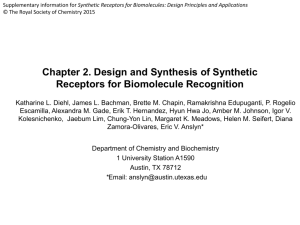Polymer nanosphere lithography
advertisement
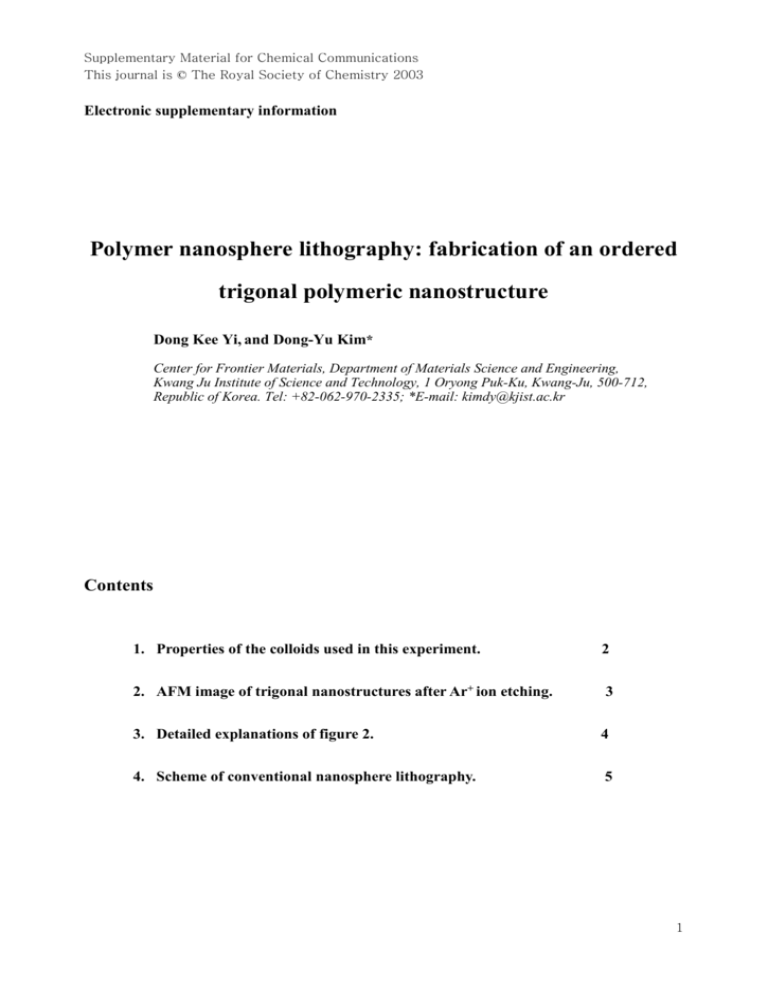
Supplementary Material for Chemical Communications This journal is © The Royal Society of Chemistry 2003 Electronic supplementary information Polymer nanosphere lithography: fabrication of an ordered trigonal polymeric nanostructure Dong Kee Yi, and Dong-Yu Kim* Center for Frontier Materials, Department of Materials Science and Engineering, Kwang Ju Institute of Science and Technology, 1 Oryong Puk-Ku, Kwang-Ju, 500-712, Republic of Korea. Tel: +82-062-970-2335; *E-mail: kimdy@kjist.ac.kr Contents 1. Properties of the colloids used in this experiment. 2 2. AFM image of trigonal nanostructures after Ar+ ion etching. 3 3. Detailed explanations of figure 2. 4 4. Scheme of conventional nanosphere lithography. 5 1 Supplementary Material for Chemical Communications This journal is © The Royal Society of Chemistry 2003 Gel Permeation Chromatography analysis revealed that soluble parts of polymer had Mn = 118,000, and the PDI value was 1.39. Compared with homo PS, the colloids showed an aliphatic C=C stretch peak at 1637 cm-1 because it contains divinylbenzene (DVB) as the cross-linker: monoreacted or nonreacted free DVB could be the origin of the C=C peak. The Tg of the colloids was determined to be 123 oC from a second scan of differential scanning calorimetry. 1. Properties of the colloids used in this experiment. 2 Supplementary Material for Chemical Communications This journal is © The Royal Society of Chemistry 2003 Corresponding SEM image 2. AFM image of trigonal nanostructures after Ar+ ion etching. 3 Supplementary Material for Chemical Communications This journal is © The Royal Society of Chemistry 2003 Wide view of Fig. 2(b). 4 Supplementary Material for Chemical Communications This journal is © The Royal Society of Chemistry 2003 3. Detailed explanations of figure 2. 4. Scheme of conventional nanosphere lithography. 5
